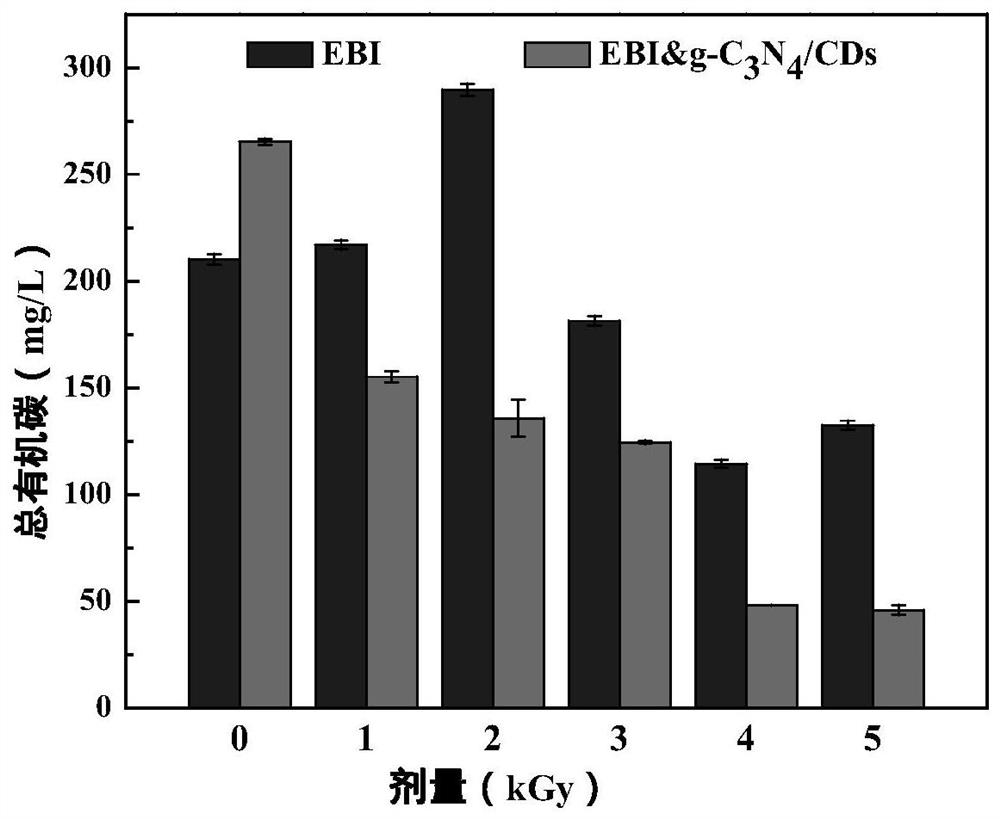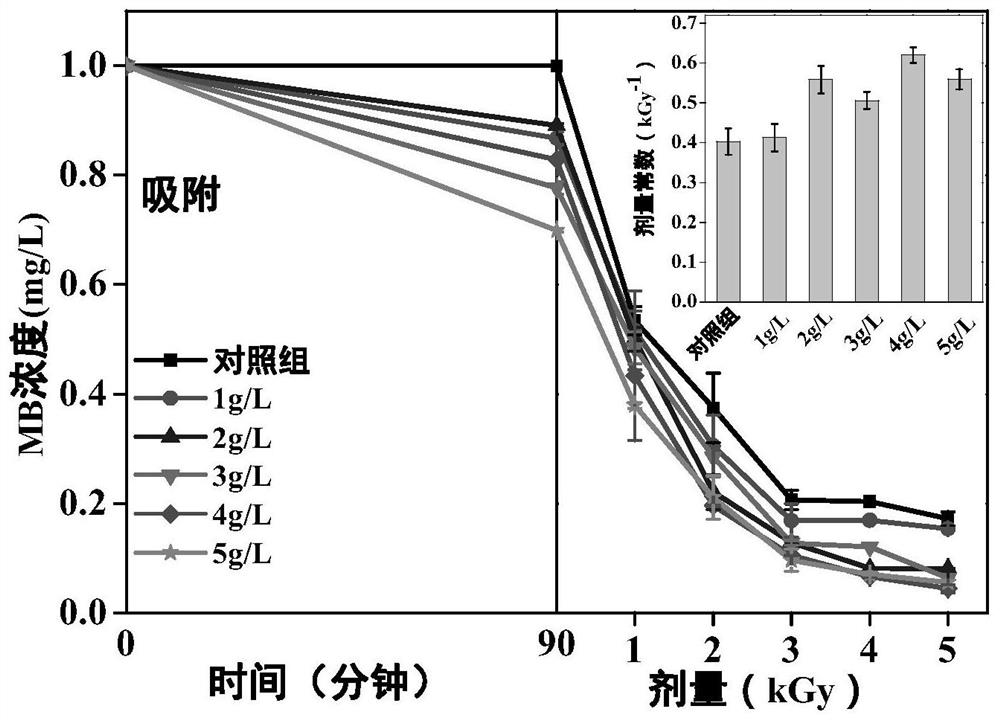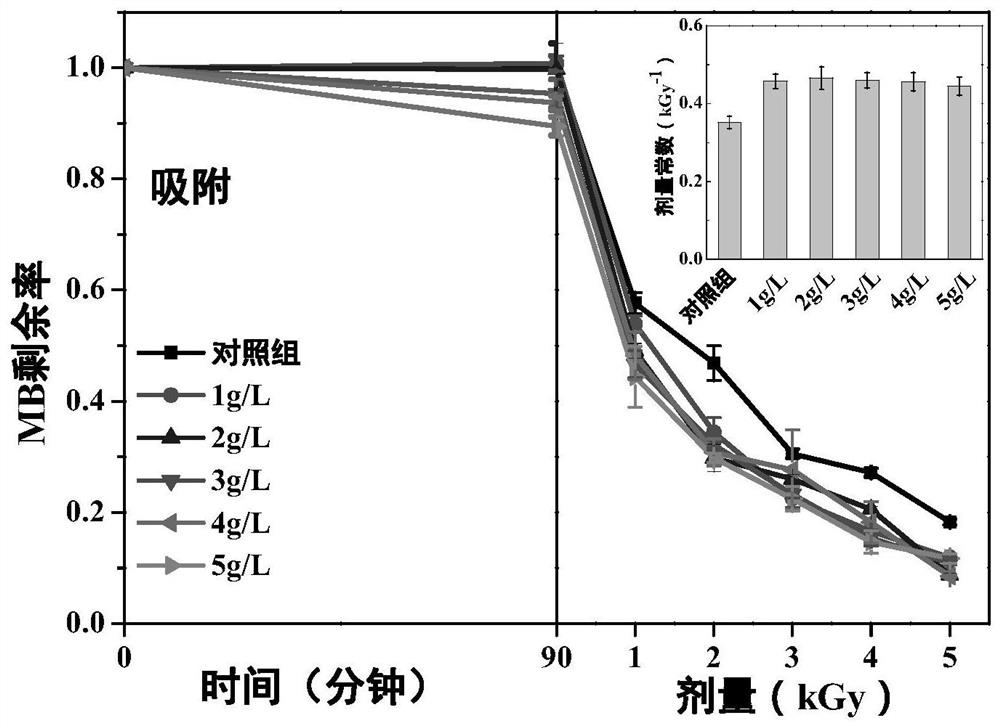Method for degrading organic pollutants in water through cooperation of catalyst and ionization irradiation
A technology of organic pollutants and ionizing radiation, applied in the direction of water pollutants, chemical instruments and methods, light water/sewage treatment, etc., can solve the problem of ionizing radiation on the removal rate, mineralization rate and removal effect of organic pollutants Low cost, economically unfeasible, etc., to achieve the effect of stable physical and chemical properties, simple preparation method, and excellent performance
- Summary
- Abstract
- Description
- Claims
- Application Information
AI Technical Summary
Problems solved by technology
Method used
Image
Examples
preparation example Construction
[0052] 1. Catalyst Preparation
[0053] Carbon nanodots / carbon nitride binary composites (g-C 3 N 4 / CDs) are prepared as follows:
[0054] Carbon nanodots / carbon nitride binary composites were prepared by thermal polymerization. The reaction raw materials were 50g of urea and 1.5g of citric acid (ground) mixed evenly, then put into a muffle furnace, and the temperature was raised to 550°C at a rate of 1°C / min. Take it out after 3 hours of heat preservation, and cool it down to room temperature naturally to obtain a gray-black solid. After grinding, a carbon nanodot / carbon nitride binary composite material is obtained, which is recorded as g-C 3 N 4 / CDs.
[0055] The carbon nano-dot / carbon nitride / metal ternary composite material (in g-C 3 N 4 / CDs / Fe 2+ The preparation method of ternary composite material is as follows:
[0056] The above-prepared g-C 3 N 4 Weigh 0.4g of the CDs / CDs binary composite material, put it into a FeSO4 solution with a volume of 100mL and ...
Embodiment 1
[0087] The method for degrading organic pollutants in water by catalyst coordinated ionizing radiation is characterized in that it comprises the following steps:
[0088] 1) Add g-C to the wastewater containing 500mg / L methylene blue solution 3 N 4 / CDs Binary Composite, g-C 3 N 4 The ratio of the mass added to the / CDs binary composite material to the volume of the methylene blue solution is 1g / L, and the mixture is uniform;
[0089] 2) Carry out ionizing radiation, the radiation dose is 5kGy, degrade methylene blue in water.
Embodiment 2
[0091] The method for degrading organic pollutants in water by catalyst coordinated ionizing radiation is characterized in that it comprises the following steps:
[0092] 1) Add g-C to the wastewater containing 500mg / L methylene blue solution 3 N 4 / CDs Binary Composite, g-C 3 N 4 The ratio of the mass added to the / CDs binary composite material to the volume of the methylene blue solution is 2g / L, and the mixture is uniform;
[0093] 2) Carry out ionizing radiation, the radiation dose is 5kGy, degrade methylene blue in water.
PUM
| Property | Measurement | Unit |
|---|---|---|
| concentration | aaaaa | aaaaa |
Abstract
Description
Claims
Application Information
 Login to View More
Login to View More - R&D
- Intellectual Property
- Life Sciences
- Materials
- Tech Scout
- Unparalleled Data Quality
- Higher Quality Content
- 60% Fewer Hallucinations
Browse by: Latest US Patents, China's latest patents, Technical Efficacy Thesaurus, Application Domain, Technology Topic, Popular Technical Reports.
© 2025 PatSnap. All rights reserved.Legal|Privacy policy|Modern Slavery Act Transparency Statement|Sitemap|About US| Contact US: help@patsnap.com



